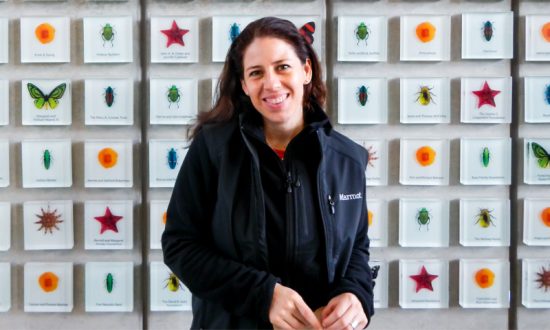Marlene Gras is an international consultant in education, public policy and youth development. She has broad experience in the design and review of education programs for formal and nonformal education in several countries. Marlene specializes in the areas of active learning pedagogies, social and emotional learning, learning climate, teacher training, the links of workforce development and education, and STEM. She previously worked as a policy analyst for the OECD Directorate for Education and Skills and has collaborated in projects and publications with several NGOs and research centres such as UNICEF, PIPE-CIDE, CCE, OECD, among others. Marlene has accompanied the Techint Group as education advisor for global programs since 2012. She holds a master’s degree in International Education from the IIE at Stockholm University in Sweden and a bachelor degree in Education and Development form Anáhuac University in Mexico.
Studies show that children rom lower-income families are more likely to achieve lower educational outcomes and drop out of school earlier than those from better-off families, as it has been broadly illustrated by the OECD. Furthermore, education is fundamental in determining a child’s adult life: indeed, education is not only associated with higher income, but also with better health and even longer life for individuals. The root is multidimensional, for instance, family context, beliefs about education, aspirations, the quality of education they have access to, the pedagogical approaches actually delivered in the classroom, the relevance of the curricula, the opportunities to connect learning with real-life, among other factors. To produce effective results, the timing of the intervention plays a central role. According to Heckman (2010), motivation and non-cognitive skills such as self-regulation and social and emotional skills, developed from an early age, are predictors of success in adult life, both for economic and personal outcomes. Thus, the sooner the development of these skills is addressed, the better the results and the less the cost to society. On the other hand, earlier exposure to STEM (Science, Technology, Engineering and Math), is also key for career choice and completion, according to Tai and Maltese. To ensure children’s good performance at school, it neither is enough only to address the academic offer nor to only strengthen their social and emotional development.
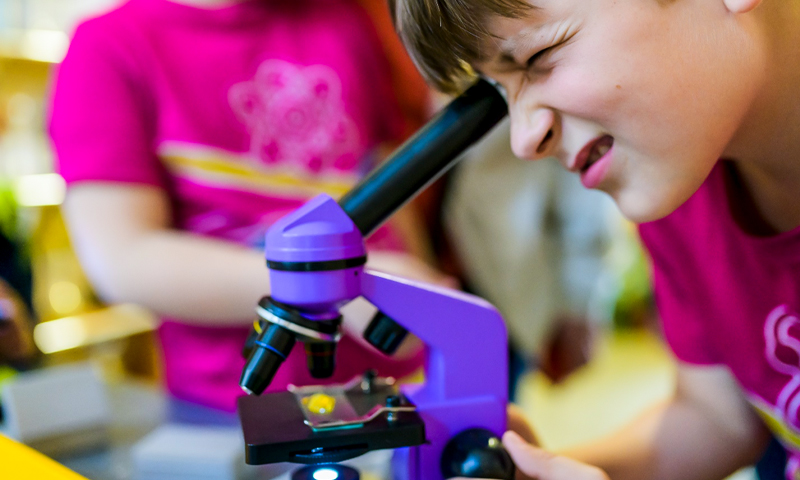
The development of healthy children and youth, sufficiently skilled to build their own wellbeing and that of their societies requires an integral approach, especially when very few opportunities of enrichment are at hand. The idea that providing extra hours of mathematics and language, “more of the same” is enough, has been long proven wrong but is surprisingly still very common to see that it is looked after as a solution to leverage education results, needless to say, without success and sometimes with negative unintended side effects, like frustration and reducing the motivation to learn. The development of healthy and skilled individuals, broadly explained by Darling-Hammond and Cook-Harvey, requires a “whole child” approach to understand children and their development as a whole and therefore targets social, emotional, cognitive, academic, psychological, ethical and physical development. Along with access to opportunities in their societies, a task beyond the scope of education. Interventions in the school context reduce the possibility of children and youth to become involved in risky behaviours, such as crime and adolescent pregnancy, as explained by McCombs, Sloan, Whitaker, and Yoo, in addition to encouraging aspirations and a productive work path.
Afterschool programs have the potential of preventing social risks and improving the development of skills to ensure better academic outcomes, such as an increase in school attendance, better attitudes towards school and learning, positive habits and the opportunity to discover new knowledge and skills in more ludic ways, without the pressure of notes, just to mention some. These programs are better suited for at-risk students in low-income communities. Several publications from The Wallace Foundation, RAND and American Institutes of Research, show that the access, sustained participation in the program, staff quality, program quality, including adult support, youth development, opportunities for enrichment, and SAFE activity design(sequential, active, focused and explicit), along with links to other institutions where children learn, such as school, their families and community are key to the success of expanded learning opportunities such as afterschool programs.
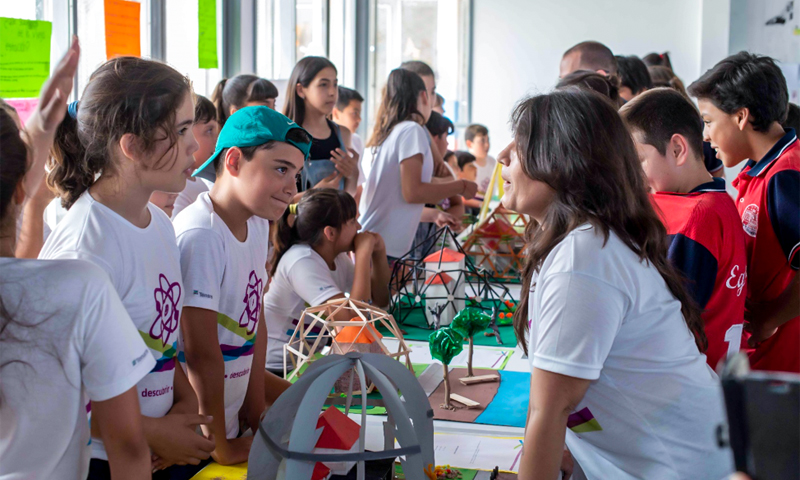
The Techint Group’s AfterSchool/ExtraClase Program: A Unique Non-Formal Education Experience in Latin America With Focus on STEM
The design and implementation of the “AfterSchool/ExtraClase Program” are privately funded by the Techint Group. It is a network of school-based afterschools, in marginalized urban or semi-urban contexts, serving at-risk students from 6 to 12 years of age, four days a week for 3.5 hours, after the regular school day. Providing free high-quality non-formal education focused on STEM, which also integrates Arts, Math, Language, Recreational activities through play, and the opportunity to solve real-world problems through project-based learning. The program pays strong attention to creating a secure and positive climate and culture that promote youth development and social and emotional learning. The program served more than 1500 children with high regular attendance in 2019.
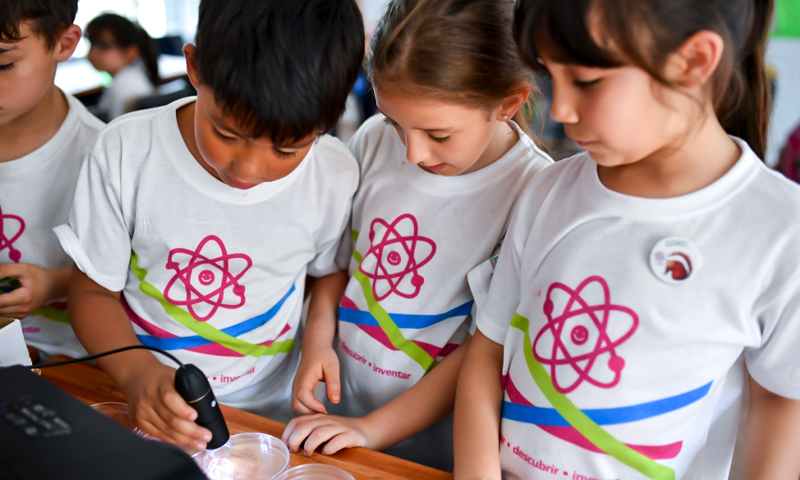
It is implemented in nin1e communities, seven of them in Latin America: Campana and Ramallo (Argentina), Pindamonhangaba (Brazil), Cartagena (Colombia), Veracruz and Monterrey (Mexico) and Montevideo (Uruguay), and also in Zalau (Romania) and Blytheville (USA). Implemented as a pilot in 2013 in Mexico and Argentina, the Program is set to serve low-income students, with little opportunities for significant development outside the school and exposed to social risks. The main objective was to reinforce their motivation to learn and increase their aspirations for their future. Today, two more objectives are intentionally pursued: improvement of mathematical and language literacies, and knowledge sharing of good and innovative practices implemented in the program, like program climate, positive discipline and project-based learning. From the XXIst Century challenges point of view, the demands of the workforce and industrial development and the need for innovation in the region, the interest and enrollment of youth in STEM careers and the development of STEM competencies are paramount. However, this interest needs to be encouraged in childhood. Furthermore, STEM must be addressed interestingly and engagingly, building ideas progressively into a coherent picture of how the world works and strong STEM disciplinary knowledge and skills combined with boundary crossing pedagogies since elementary education, as explained by Leung and Harlen. For these reasons, STEM was established as the focal point of the Afterschool Program
The Students as The Protagonists of Their Learning and Development
The “AfterSchool Program” is grounded in constructivism, promoting positive youth development, through inquiry and experiential learning, integrating hands-on learning, problem-solving and project-based learning to equip and permanent feedback take place regularly through classroom observation tools, self-assessment, and global and local training. One full day per week, and part of the winter and summer breaks, where children do not attend the program, are devoted to praxis reflection, planning for continuous improvement and training.
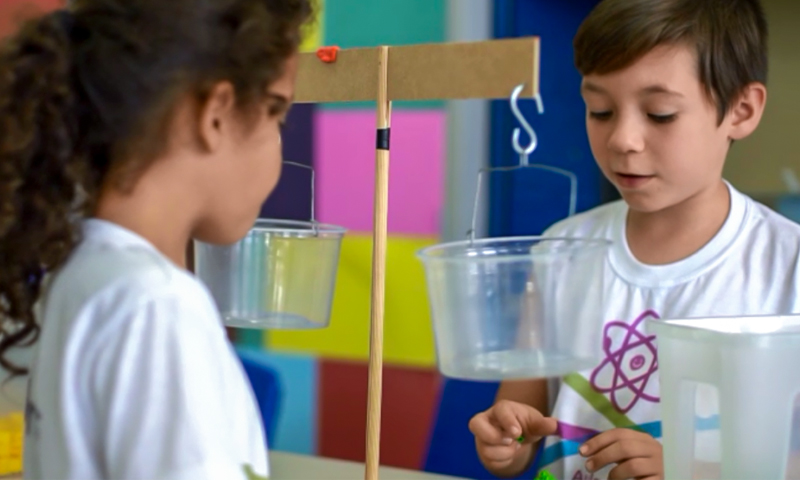
Evaluation Challenges and Outcomes
Since the very first year, monitoring and intermediate outcomes evaluations were put in place, and efforts were made in order to have some indicators of impact. The challenges have been numerous: evaluation design, which accounts for some complexities related to implementing in many different countries, the comparability of the data, the validity of assessments, the different languages and the availability of control groups in each community. One indicator of success has been the increase in enrolment in the schools since the moment when the program was implemented. This is the case in one of the sites in Veracruz (Mexico), the site located in Pindamonhangaba (Brazil) and one in Ramallo (Argentina), where there is a waiting list since the program is at full capacity.
Also, in Cartagena, three extra classrooms had to be built to serve all the children wanting to attend. Another indicator is the high attendance rate to the program which is voluntary: 78% of students with high attendance to the Program in 2019. Results in Math: STEM Academia in collaboration with PREST conducted an experimental evaluation in 1.083 students in Argentina, Brazil, Colombia, Mexico and Uruguay after a year of implementing the math curriculum, children improved in average the equivalent of 1 additional year of education. In 2019, data collection with the Common Instrument Suite (CIS) took place in all programs, except for United States, Romania and Monterrey (Mexico) Permission to use the Common Instrument Suite (CIS) was obtained from The PEAR Institute at Harvard Medical School and McLean Hospital.
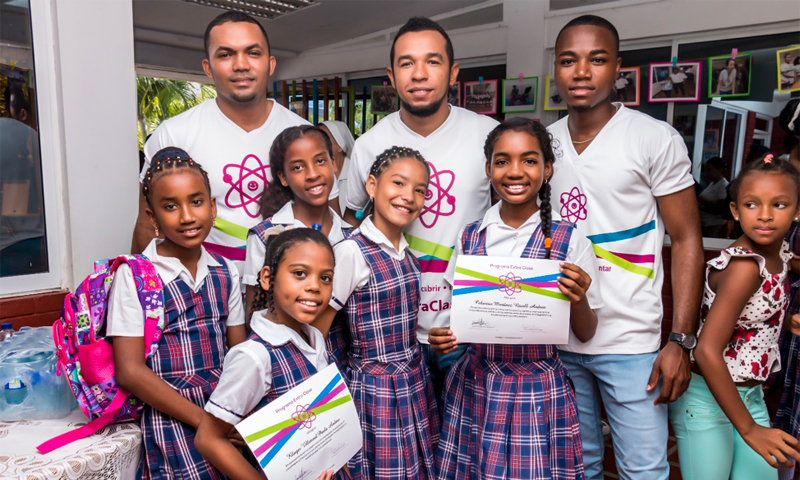
The Common Instrument Suite (CIS) is a self-report survey that measures a variety of science, technology, engineering, and math (STEM)-related attitudes, including STEM engagement, STEM career knowledge, and STEM identity. It was specifically developed with informal, afterschool, outside-of-school time (OST) STEM programs in mind. The purpose of the survey is to better understand how informal STEM programming impacts students’ perceptions/ attitudes towards STEM. (PEAR, 2020) The survey was answered by 301 children out of 326 from 5th grade (Brazil and Colombia), 6th grade (Argentina and Uruguay) and 4th, 5th and 6th grades (Veracruz – Mexico). Regarding their interest in STEM: 66% of the children surveyed answered that their interest in Science had increased, 75% in Technology, 55% in Engineering and 53% in Math. When asked about their career choices, more than 48% answered that they wanted a STEM job in the future more or much more. 24% of the same and 28% less or much less.
Overall, students reported statistically significant gains in subscales measuring stem career interest, stem career knowledge, stem engagement, stem enjoyment, and stem identity, and reported a significant overall decrease in engagement with stem activities (p<0.05). Students from all sites surveyed reported significant overall gains in all 21st Century subscales: critical thinking, perseverance, relationship with adults and relationship with peers (p<0.05). There were positive correlations between gains in science interest and the gains in all four 21st century/socioemotional power skills: critical thinking, perseverance, and adult relationships and peer relationships. According to PEAR, “these relationships have implications for addressing 21st century/SEL skills in informal STEM programs. Plausibly, positive informal science experiences influence peer and adult relationships (teamwork/collaboration) as well as critical thinking and perseverance (flexible thought, logic, and grit)” The hypothesis is that “quality programs enhance 21st Century Skills through engagement with science learning – and this experience better prepares students to cope with increasingly complex life and work
environments”.
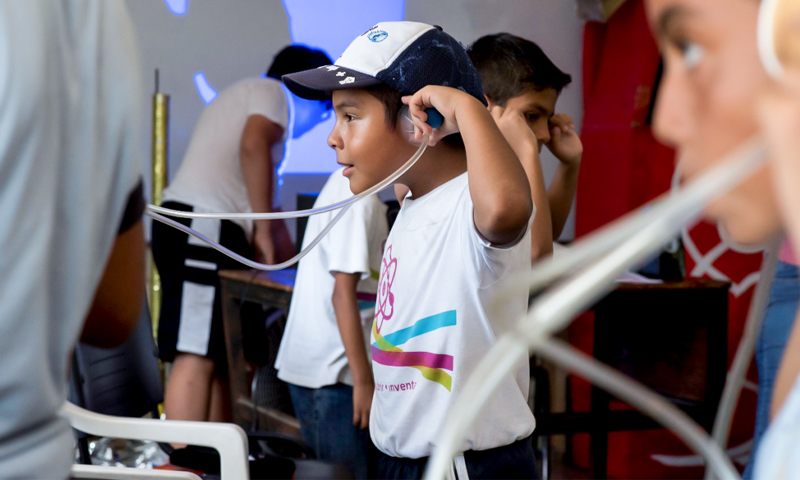
COVID-19 And The Commitment Remains
There remains a commitment on behalf of the AfterSchool/ ExtraClase Program Network during times of COVID-19. The program is placing three priorities at the centre: maintaining supportive relationships with children and their families through phone calls, and some virtual classrooms in the communities where there are devices and internet accessibility, maintaining the interest in learning and focusing on the development of key learning objectives with optimism.




